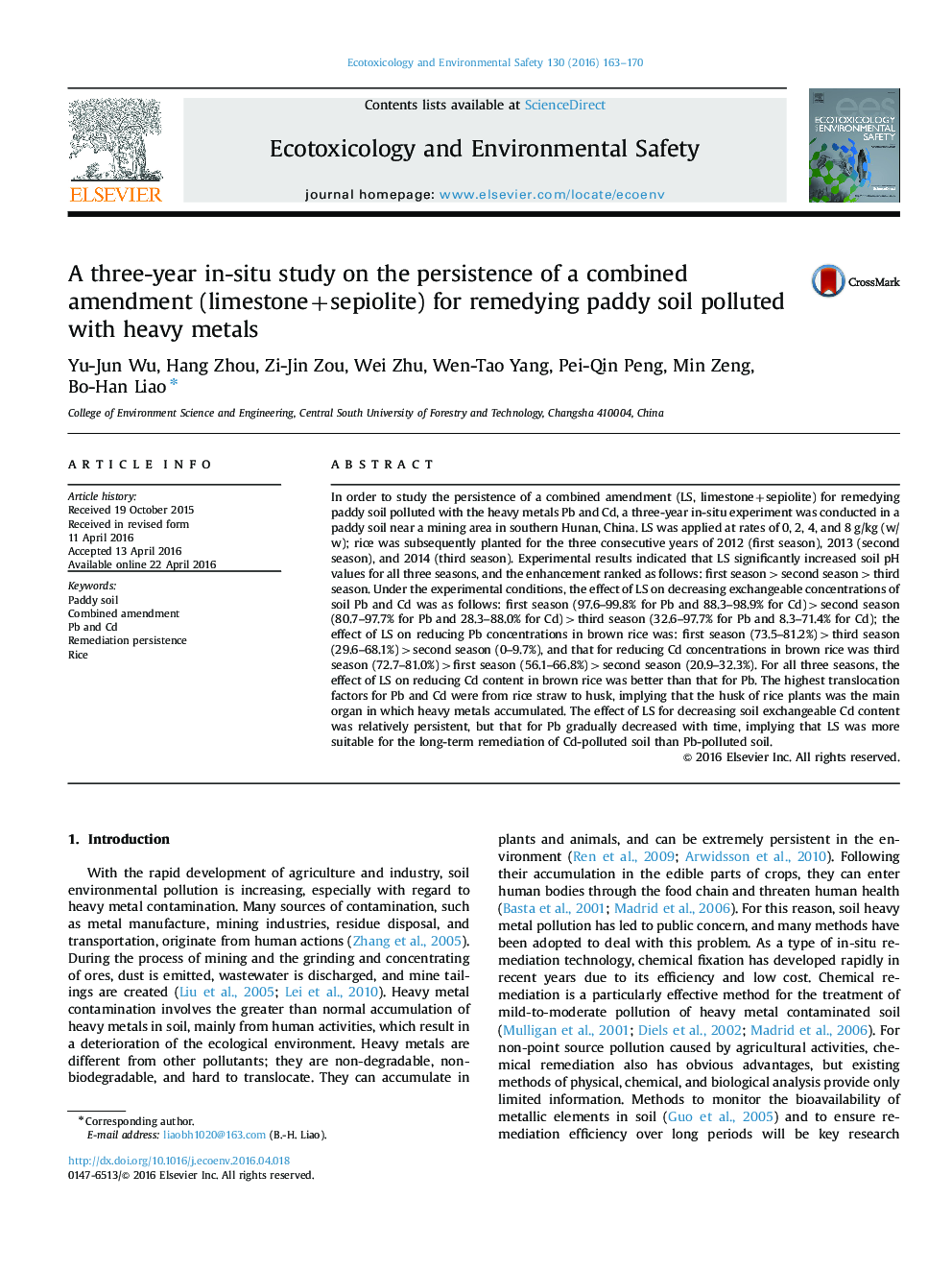| کد مقاله | کد نشریه | سال انتشار | مقاله انگلیسی | نسخه تمام متن |
|---|---|---|---|---|
| 4419182 | 1618933 | 2016 | 8 صفحه PDF | دانلود رایگان |
• We study the persistence of a combined amendment (LS, limestone+sepiolite) for remedying paddy soil polluted with a three-year in-situ experiment in southern Hunan.
• We discuss the changes in physicochemical properties of the tested soil and in bioavailability of soil heavy metals due to LS applying to the tested soil with a three-year in-situ experiment.
• We try to understand the translocation and accumulation of Pb and Cd in the soil and rice plants due to LS application.
• We consider that LS (limestone+sepiolite) is more suitable for the long-term remediation of Cd-polluted soil than Pb-polluted soil.
In order to study the persistence of a combined amendment (LS, limestone+sepiolite) for remedying paddy soil polluted with the heavy metals Pb and Cd, a three-year in-situ experiment was conducted in a paddy soil near a mining area in southern Hunan, China. LS was applied at rates of 0, 2, 4, and 8 g/kg (w/w); rice was subsequently planted for the three consecutive years of 2012 (first season), 2013 (second season), and 2014 (third season). Experimental results indicated that LS significantly increased soil pH values for all three seasons, and the enhancement ranked as follows: first season>second season>third season. Under the experimental conditions, the effect of LS on decreasing exchangeable concentrations of soil Pb and Cd was as follows: first season (97.6–99.8% for Pb and 88.3–98.9% for Cd)>second season (80.7–97.7% for Pb and 28.3–88.0% for Cd)>third season (32.6–97.7% for Pb and 8.3–71.4% for Cd); the effect of LS on reducing Pb concentrations in brown rice was: first season (73.5–81.2%)>third season (29.6–68.1%)>second season (0–9.7%), and that for reducing Cd concentrations in brown rice was third season (72.7–81.0%)>first season (56.1–66.8%)>second season (20.9–32.3%). For all three seasons, the effect of LS on reducing Cd content in brown rice was better than that for Pb. The highest translocation factors for Pb and Cd were from rice straw to husk, implying that the husk of rice plants was the main organ in which heavy metals accumulated. The effect of LS for decreasing soil exchangeable Cd content was relatively persistent, but that for Pb gradually decreased with time, implying that LS was more suitable for the long-term remediation of Cd-polluted soil than Pb-polluted soil.
Journal: Ecotoxicology and Environmental Safety - Volume 130, August 2016, Pages 163–170
